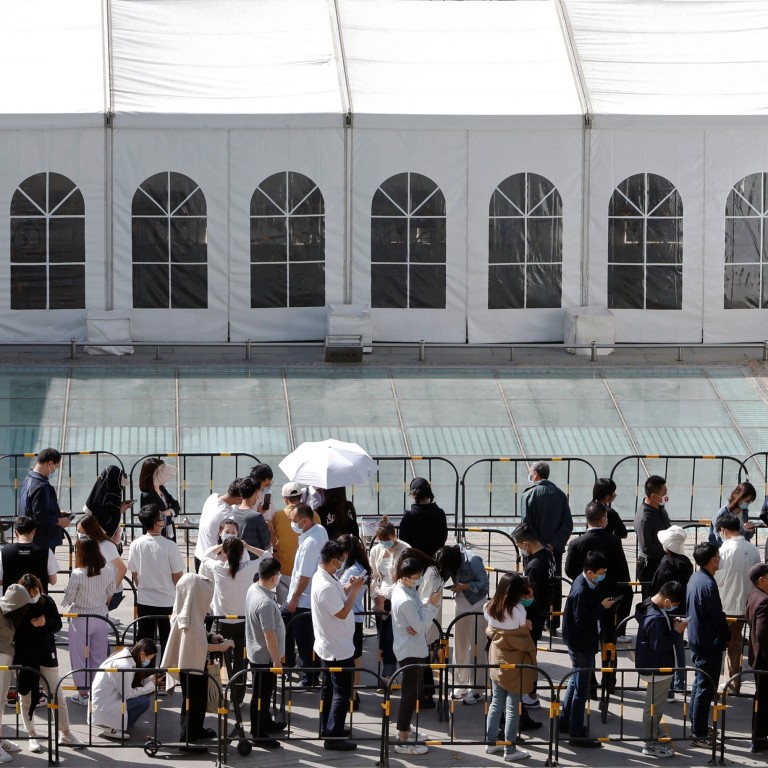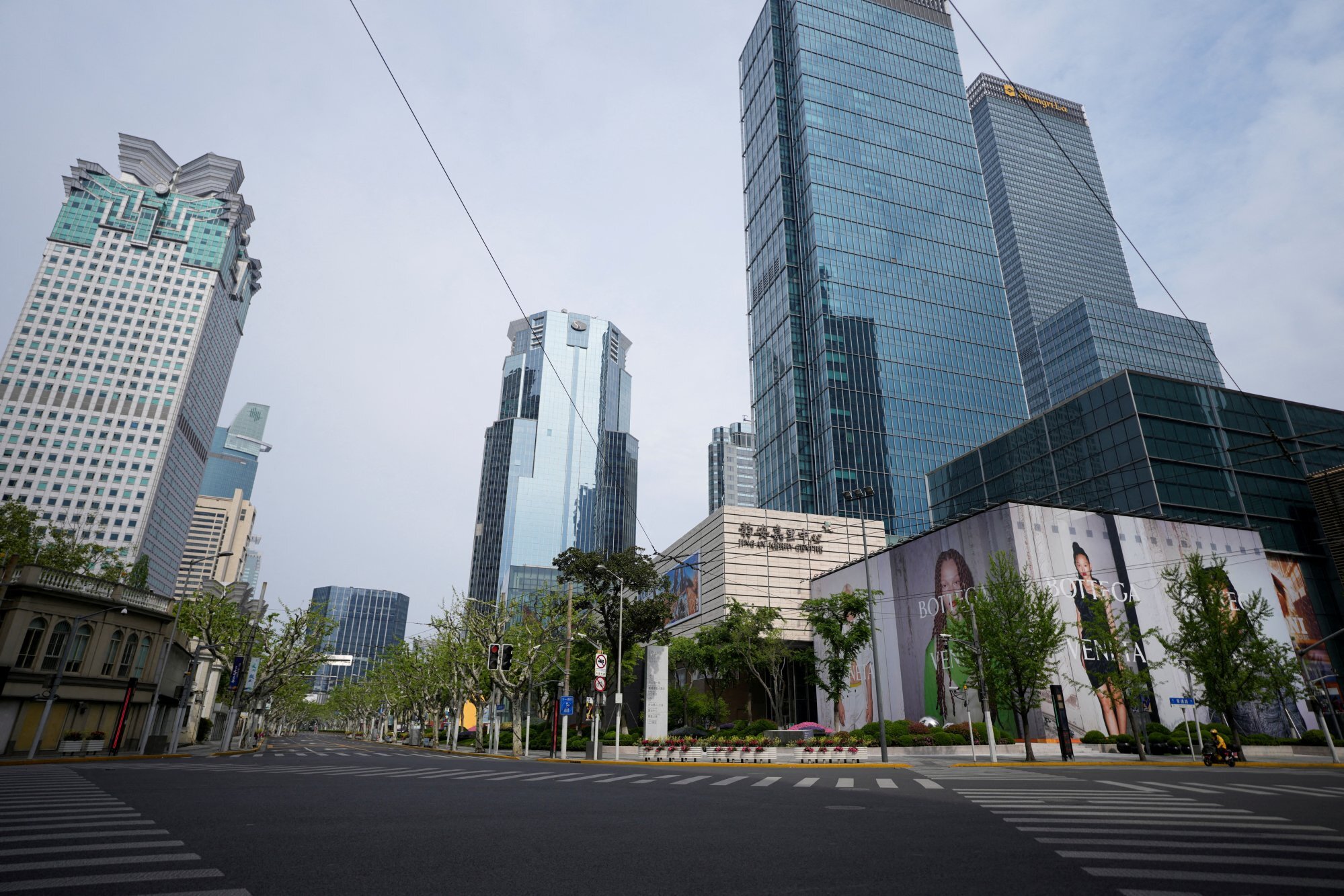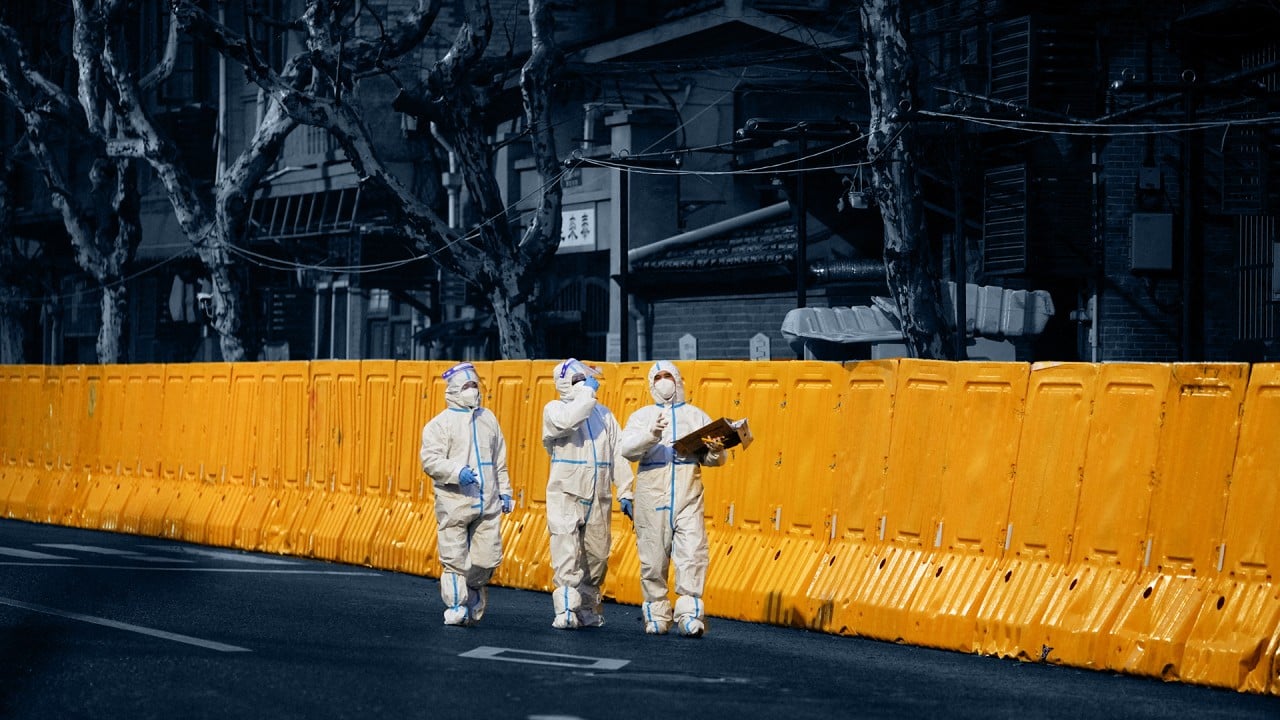
China shifts Covid-19 focus to Beijing outbreak as Shanghai’s new cases fall to 21-day low
- Shanghai’s new infections fell 12.7 per cent to 16,980, while cases with symptoms declined by almost a third to 1,661, with 52 fatalities
- Beijing added 33 cases, including one asymptomatic patient, bringing the total to 71 since the Omicron variant of Covid-19 was reported in the Chinese capital on April 22
Beijing added 13 cases on Tuesday, taking the Chinese capital’s cumulative cases since April 22 to 92. Health authorities ordered mass tests in 10 of the city’s 16 districts to find and isolate the highly transmissible Omicron variant, after admitting that the coronavirus had spread undetected for a week.
“The number of cases is set to increase, amid efforts to screen for infections in the high-risk areas that the Covid-19 carriers have touched,” said Pang Xinghuo, deputy director of Beijing’s disease prevention and control centre, during a press briefing on Tuesday, adding that two transmission chains had been spotted in eight districts.


“More support should be given to the companies so that they can concentrate on production with an effective way of guarding against the virus,” Li said.
New cases fell 12.2 per cent nationwide to 17,724 on Tuesday. Shanghai, the new epicentre for the disease since March 1, recorded 190 fatalities comprising almost entirely of unvaccinated, elderly residents – 82.5 years old on average – with underlying medical ailments like cancer and heart disease.

Shanghai’s authorities took no chances, ordering more than half a dozen rounds of citywide mass tests to find the transmission chains. The latest round of tests were conducted on Tuesday.
A citywide standstill order, known as “static management,” is also expected to end today. The order curbs the movements of medical staff, health officials, delivery couriers and community volunteers in unguarded zones.
Technical glitches in the city’s health code app prevented thousands of residents from undergoing nucleic tests while embarking on their own rapid antigen tests (RAT) at home.
Shanghai had hoped to achieve a societal zero-Covid goal by April 20, bringing new infections in unguarded zones – or low-risk residential compounds and their surroundings – to zero before shifting its focus to prevent the disease from spilling into the community.
The standstill order was extended to April 26 as the Omicron infected courier delivery workers and medical staff. A total of 217 cases were detected in unguarded zones on Monday, unchanged from a day earlier.
“Chances are slim for a lifting of the lockdown before the societal zero-Covid goal is achieved,” said Meng Tianying, a senior executive at Shanghai-based consultancy Domo Medical. “It is difficult to predict when the goal can be achieved because the Omicron is not easy to contain.”

Severe cases climbed to 259 from the 196 reported on Monday, while the number of patients in critical condition rose to 28 from 19.
Some 14,812 Covid-19 patients were released from hospitals and quarantine sites on Monday, Zhao Dandan, deputy director of Shanghai health commission, said at a press briefing on Tuesday, raising the total to about 265,000. This amounts to 50.8 per cent of the city’s total infections during the current wave.


